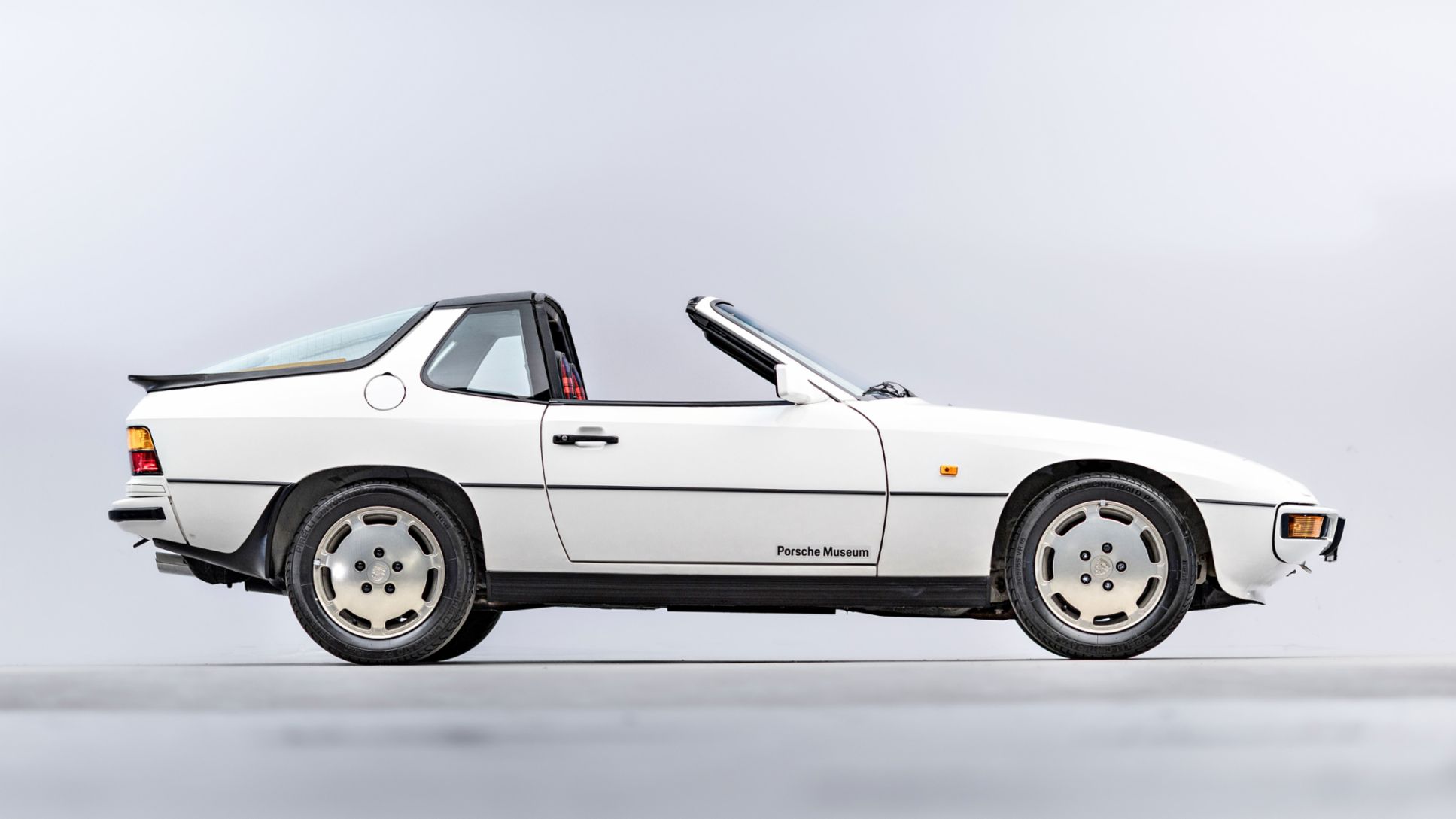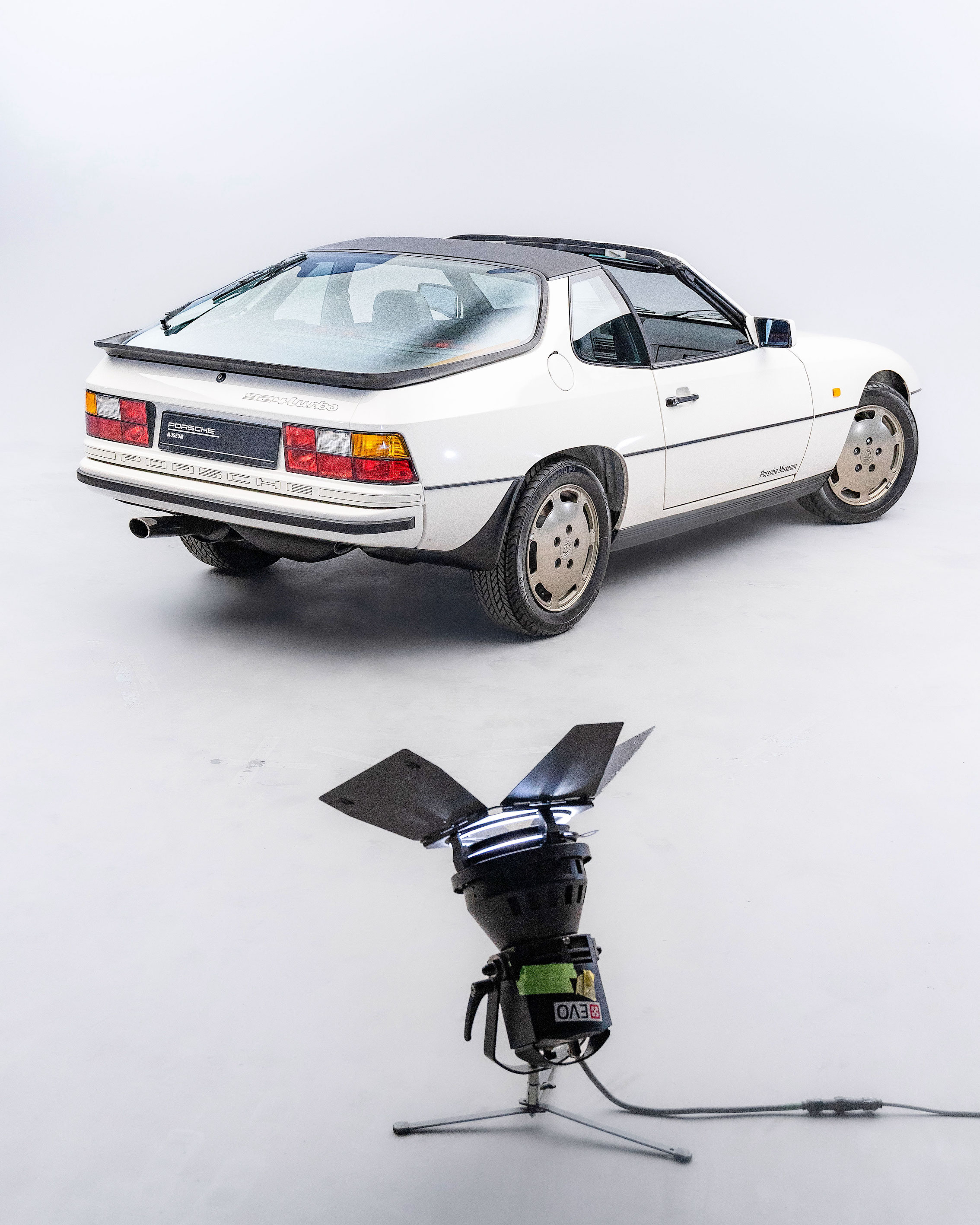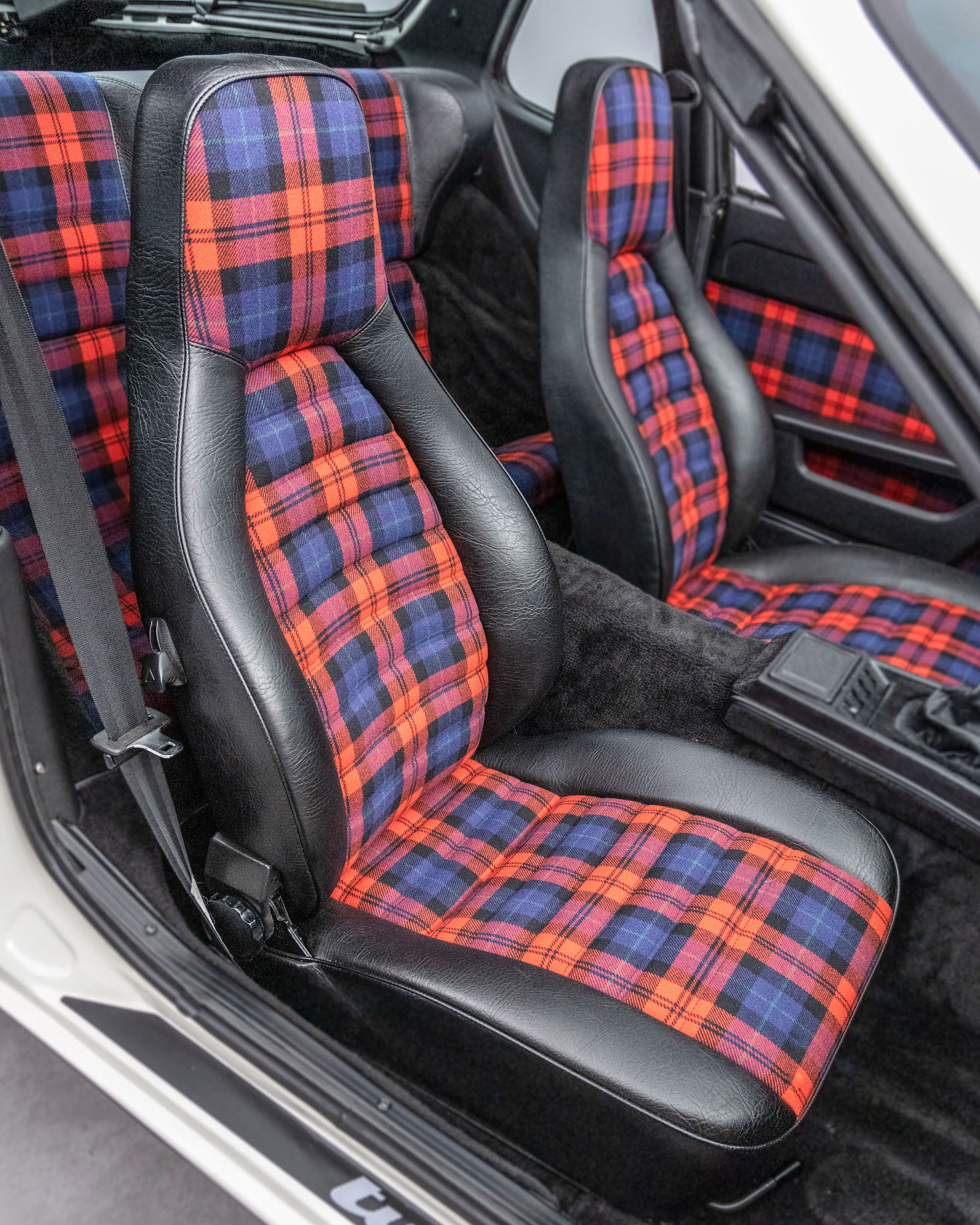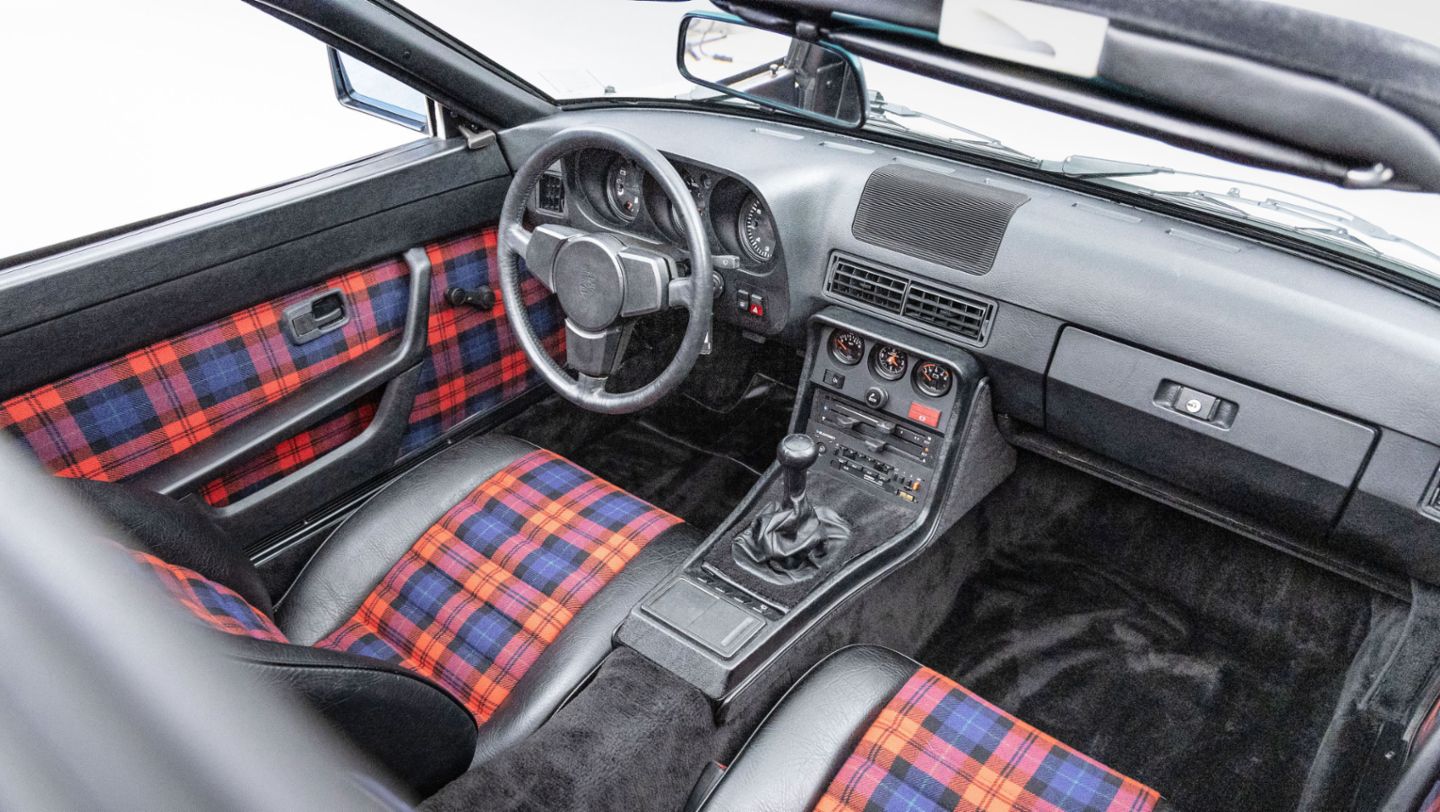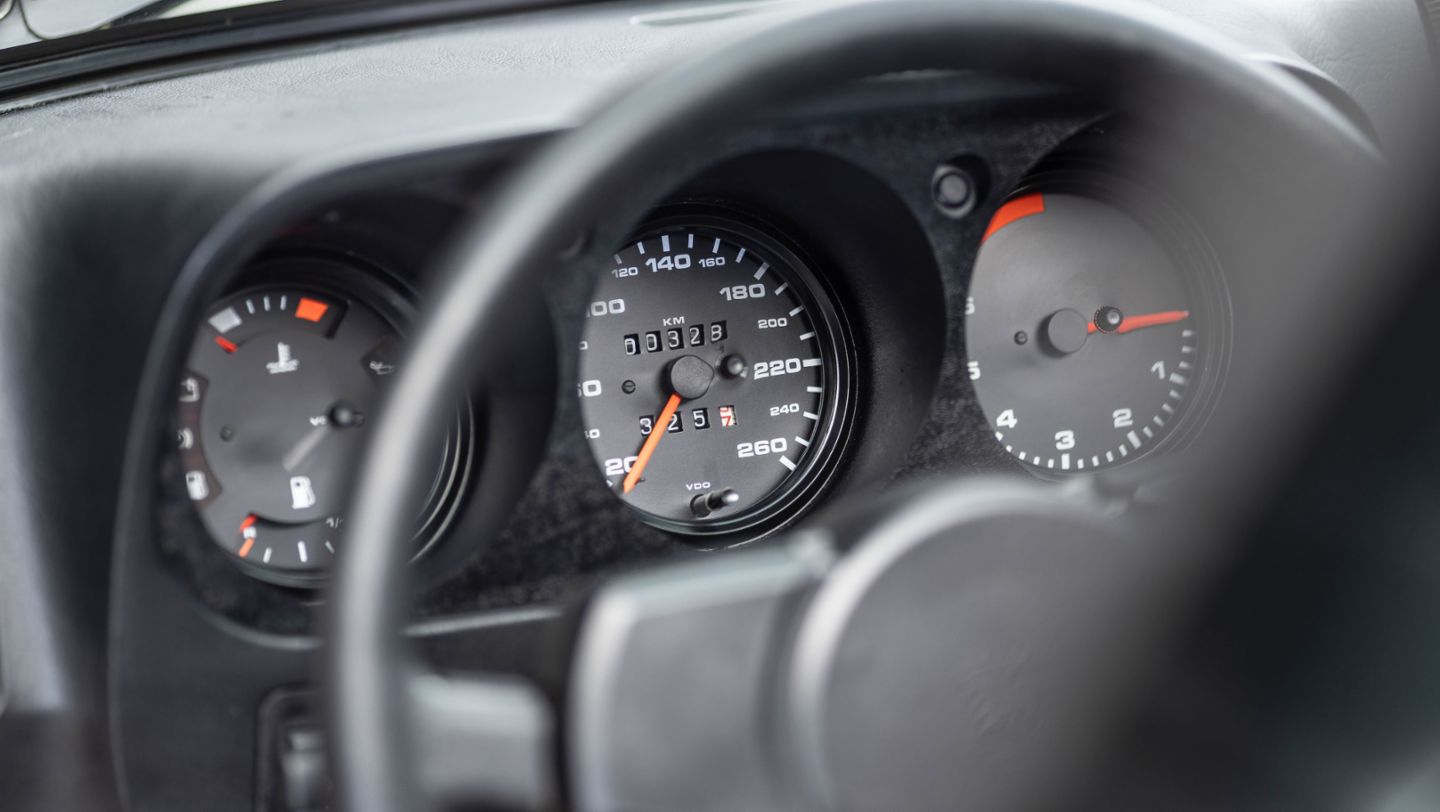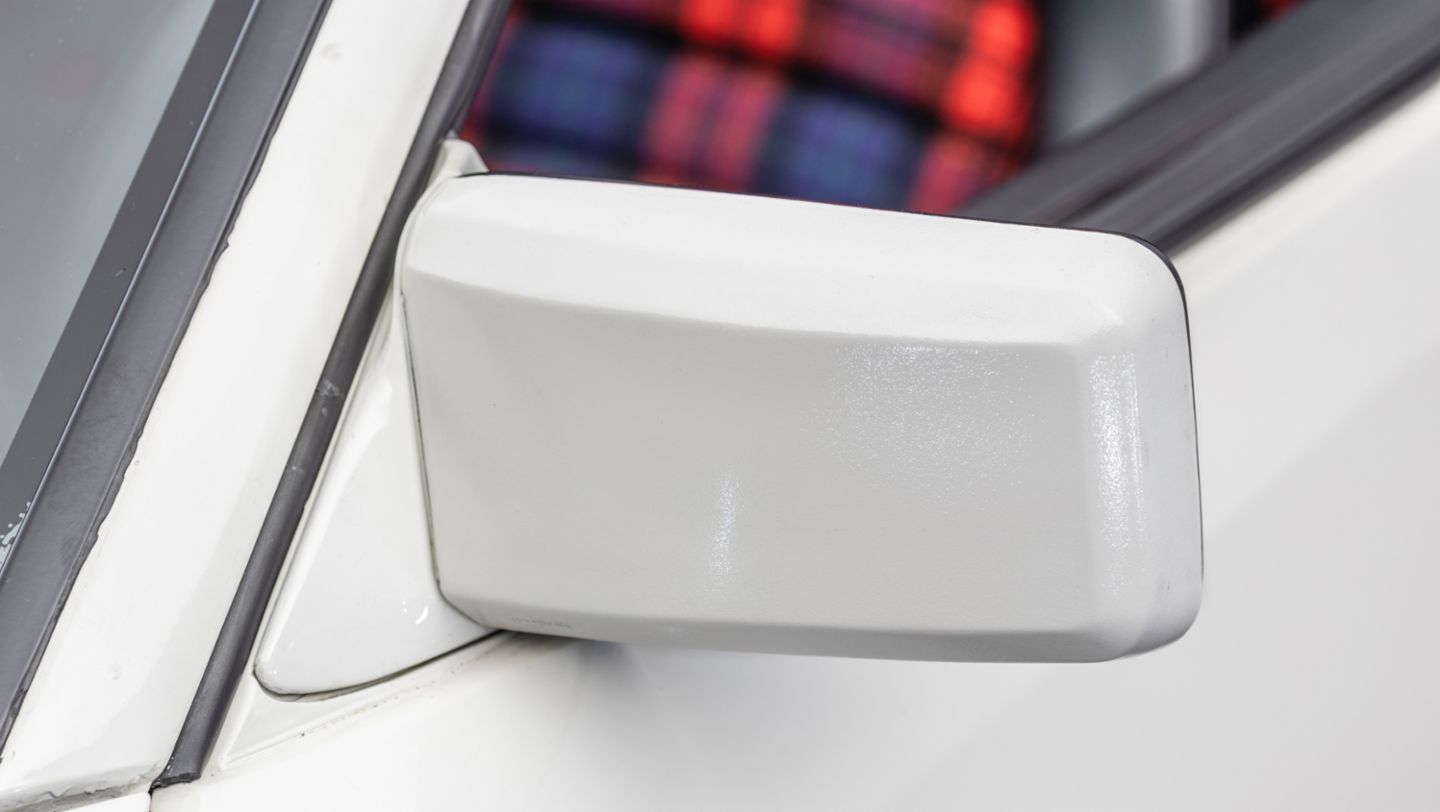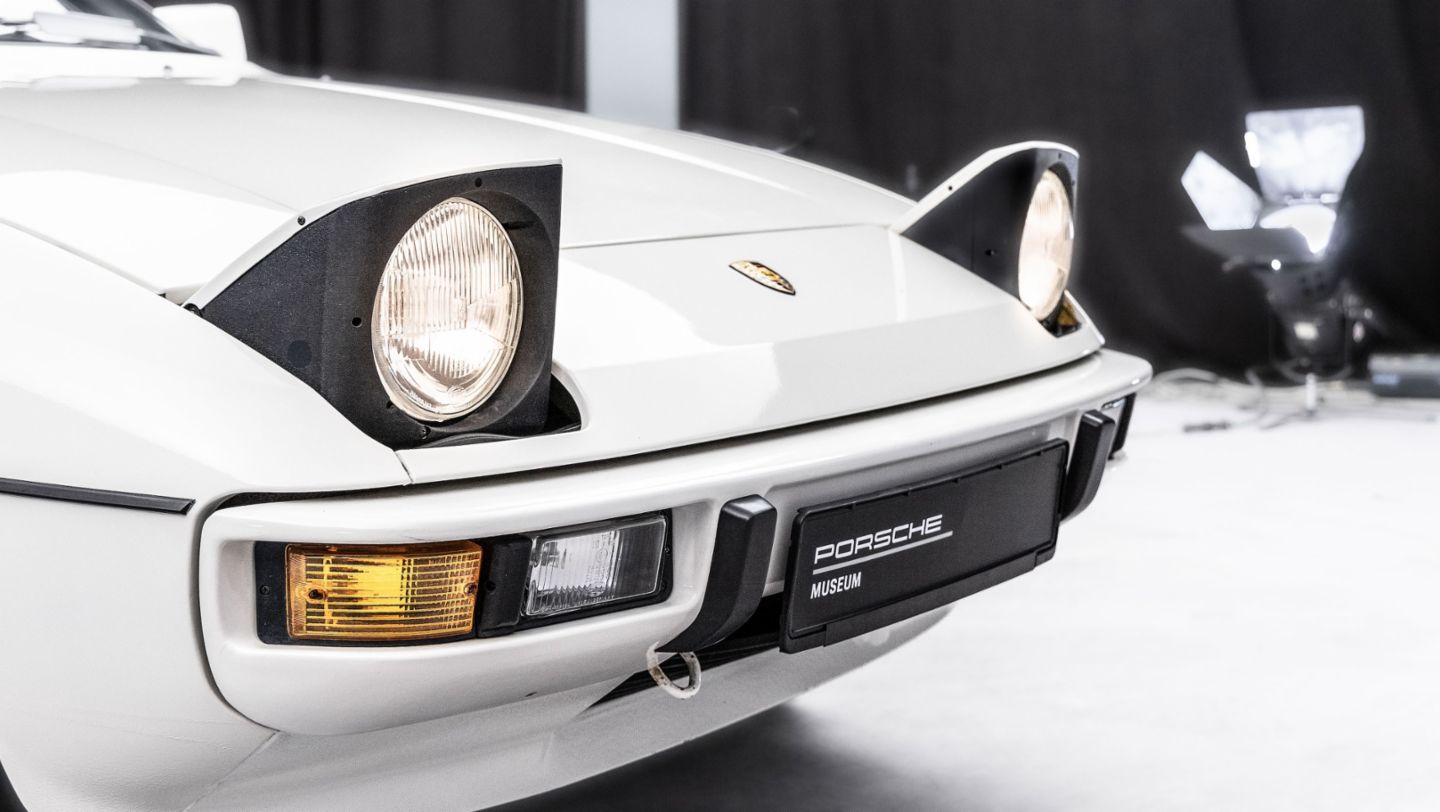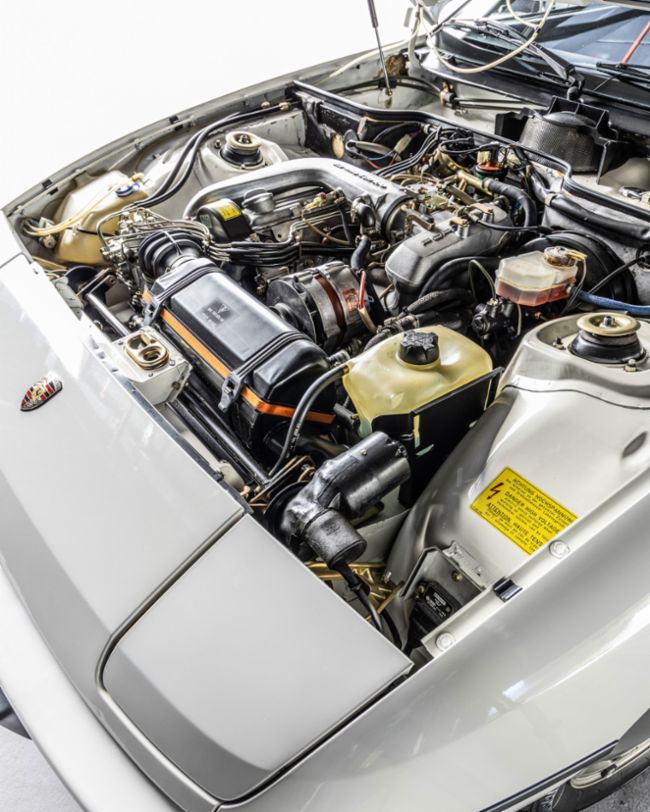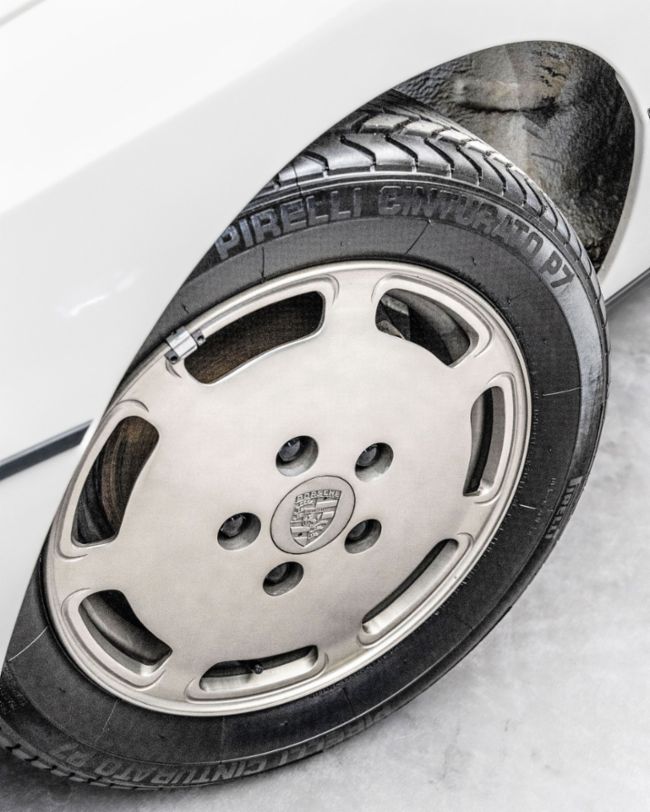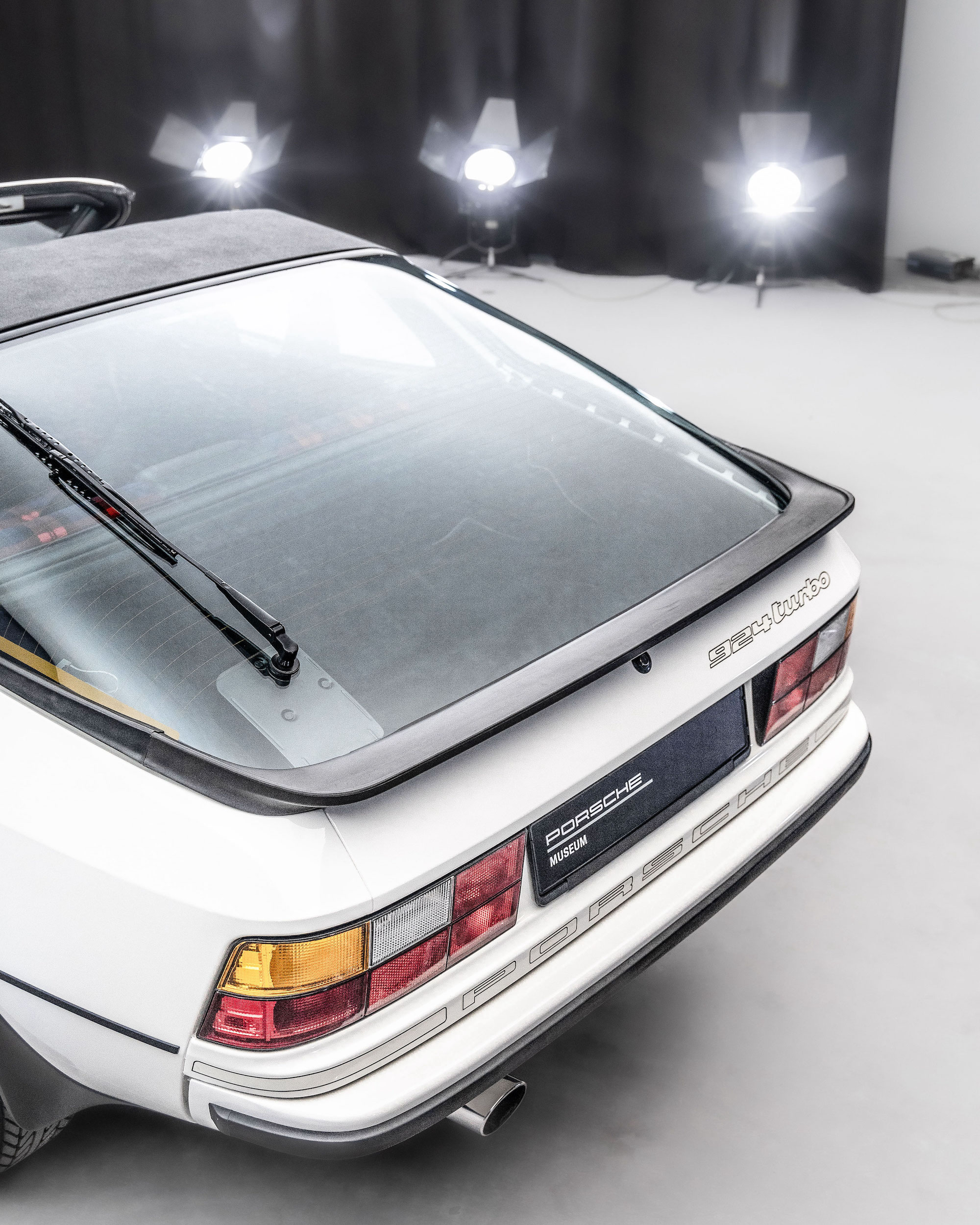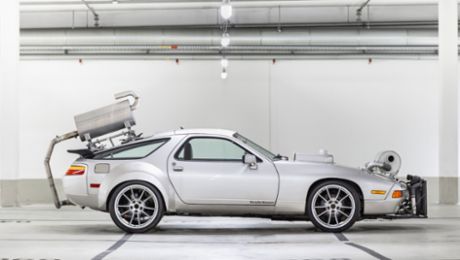From the perspective of Porsche, it all made sense: the Targa version of the four-cylinder 912 had sold well and its successor, the 914, an entry-level Porsche, had been designed as a Targa from the outset. So a Targa version of the new 924 entry-level model seemed to be the next logical step.
Development of the 924 Targa began in 1977, a time when its popular role model, the 911 Targa, had already been on the market since 1966. At the same time, development of the Turbo version of the four-cylinder transaxle model entered its final phase. With the start of the 1979 model year, the 170 PS, 225 km/h 924 Turbo helped close the large gap between the base model of the 125 PS 924 and the 180 PS 911 SC. It thereby maintained a respectful distance to the 911, while at the same time catering to those customers who liked the idea of the transaxle concept but did not want to buy an expensive 928 with its 240 PS 4.5-litre V8.
912 and 914 as Targa versions
“The new Porsche 924 Turbo utilises technology that has been tried and tested in racing and in the 911 Turbo in series production and is now used primarily to achieve high engine performance – exhaust gas turbocharging,” Porsche announced in a press release. The advertising put a big emphasis on the link between the 924 Turbo and its 911 Turbo big brother. The whole thing sounded like a sure-fire success.
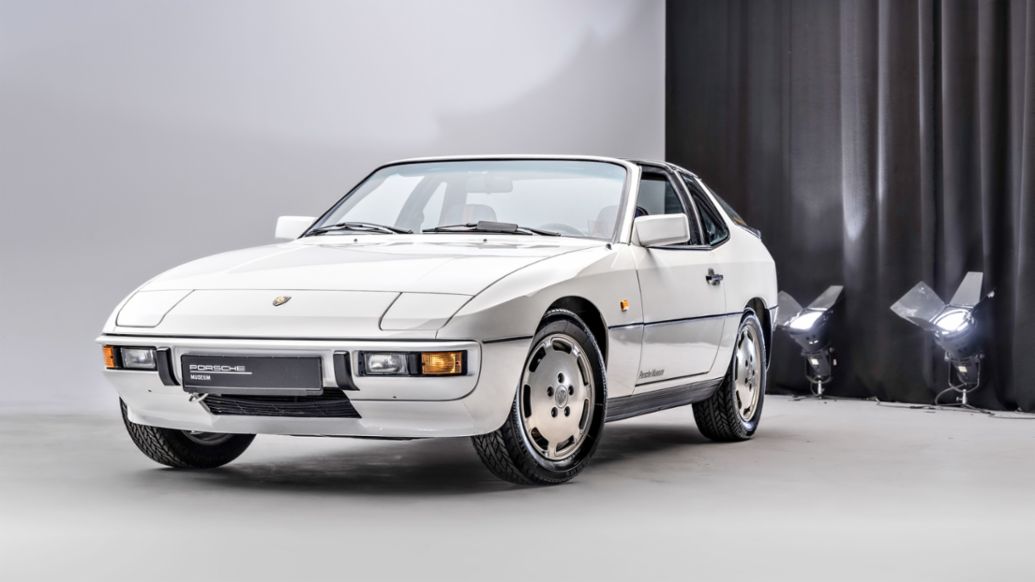
Many testers had already confirmed that the chassis of the 924 could handle more power than the 125 PS initially offered. This therefore made the Turbo version a logical combination of existing technologies, one that tapped into existing potential. “There is no question that the Turbo engine mobilises the reserves inherent in the 924 concept,” wrote Reinhard Seiffert in the Porsche magazine Christophorus.
Significant changes were made to the 2.0-litre EA 831 engine from the VAG Group ranks in converting it from a naturally aspirated engine to the turbocharged one, which was assembled and tested on a dedicated production line in Zuffenhausen before being installed on the Neckarsulm assembly line.
While the four-cylinder engine had already been modified for use in the 924 and been optimised accordingly, the changes to the Turbo engine went even further. Its new cylinder head consisted of an aluminium alloy with silicon components, modified for the high temperatures of a Turbo engine.
The combustion chamber was redesigned and the compression ratio was reduced from 9.3:1 in the naturally aspirated engine to 7.5:1. Valves set back and enlarged by three millimetres at the exhaust and platinum spark plugs relocated to the intake side enabled a combustion process adapted to the characteristic Turbo conditions.
Little sibling of the 911 Turbo
The engineers, working under Project Manager Jochen Freund, positioned the KKK 26 supercharger as close as possible to the exhaust manifold on the passenger side and channelled the charge air across the engine to the intake side. Because this changed the space in the engine compartment, both the alternator and the motor for the pop-up headlights had to be relocated.
A maintenance-free transistor ignition, an adapted K-Jetronic injection system, two fuel pumps instead of one, and an oil capacity increased from 5.0 to 5.5 litres complemented the extensive conversion measures. This resulted in a 36 per cent increase in the power output per litre. The KKK turbocharger, operating at a pressure of 0.7 bar, helped pump 170 PS from the 2.0-litre four-cylinder at 5,500 rpm.
From the outside, the turbocharged version – internally designated as Type 931, with right-hand drive versions given the number 932 – was immediately recognisable by the additional NACA ducts in the bonnet. The 15-inch five-spoke alloy wheels and a more powerful brake system were standard, as was the black, full-length polyurethane rear spoiler. The car had minimal drag with a frontal area of 1.79 m2 and a drag coefficient of 0.35.
Project launched in May 1977
Porsche said that it would have been inconsistent “to create the high-performance characteristics of the 924 Turbo by making gaudy, drag-increasing changes,” but the new 924 variant still stood out.
The first 924 Turbo was delivered with black anodised trim strips on the windows and optionally with two-tone paintwork and seats with centre stripes in tartan fabric – an attention-getter by any standard. “Porsche reassures doubters by pointing out that the 924 Turbo is also available in a single colour – at no extra charge,” Gert Hack reported to readers of auto, motor und sport after the first test.
At first glance, the Turbo, equipped with spoilers, aluminium rims in a spoke wheel design and the frequently ordered two-tone paintwork, looked like a visually overwrought 924, but on closer inspection it turned out to be a refined, sophisticated piece of engineering, the perfect transaxle model for real sports car drivers. This was all the more true when an upgraded model version appeared for the 1981 model year. With 177 PS, it had more power and better equipment and was more economical in terms of fuel consumption.
Planning with naturally aspirated engine and turbo
In the meantime, however, work was under way on another 924 version: the result was a Turbo Targa prototype, which gave the model line a brief boost in 1979.
Development of the 924 Targa began on 1 May 1977 under job number 927/57. In typical Porsche fashion, two project numbers were assigned: the left-hand drive was given design number 941, the right-hand drive 942. A version with a naturally aspirated engine and one with a turbo engine were part of the plans from the outset. Both the chassis and the engine were to be retained unchanged.
In terms of design, on paper, the designers entertained several ideas of a 924 Targa with a manually removable roof section, for example as a coupé with a large glass tailgate or as a standalone notchback version. At the same time, a completely new idea of a Targa concept for the future began to take shape. The idea was to make it possible to slide a glass roof over the rear window – as was later the case with the 911 Targa (type 993).
However, the classic Porsche approach with a roll-over bar was also pursued. The transaxle Targa prototype was based on a 924 Turbo from the 1979 model year in glistening Alpine white with strongly contrasting tartan centre panels on the seats. Thanks to the inconspicuous way the Targa concept integrated into the overall line of the car, and due to the fact that the finished car appeared almost production-ready, even 45 years later the one-off from the Porsche Museum collection still looks like a representative of the series production model. The removed roof section is only noticeable on closer inspection.
The roofline of the Targa concept car follows the familiar 924 shape with a large glass dome. The upper side of the bar, which makes up around a third of the top of the roof, is made of the same plastic as the Targa roof, resulting in a harmonious look reminiscent of the 911 model.
The special key for locking and unlocking the roof is within easy reach in the glove compartment, and the speedometer shows a whopping 328 kilometres. When was the last time that the prototype, which we move metre by metre by hand through the photographic studio, drove under its own power?
Development halted
The project completion recorded in the ‘Documentation of development projects and model lines’ is dated 29 February 1980. Because the development and tooling costs were estimated to be too high and the rigidity of the body was questionable, development of a 924 Targa was halted.
The 944, which was waiting in the wings, is likely to have also contributed to this decision. A convertible version of the 944 appeared to be the better solution, and the knowledge gained from the 924 Targa development was incorporated into this project – a project that also went by type number 941.
But Targa didn’t automatically mean roll-over bars, as the second attempt at an open-top 924 version with movable glass roof parts amply demonstrated. “The roof and rear window contour is designed in a way that makes it possible to slide a glass roof over the rear window,” the minutes recorded. Photos from the ‘8,000 km endurance run with vehicle 931 A 17 Targa’ show a 924 with a notchback, a typical Targa roof centre section and a rear roof structure made of glass very similar to the later 911 Targa (993). So a Targa without a roll-over bar.
In this case, too, the costs were considered too high and the body was found not to guarantee the required rigidity. The roof design also left much to be desired. “Moving the Targa roof over the rear window was mechanically and visually unsatisfactory. Insufficient view to the rear with the glass roof down. Type approval difficulties expected,” was the final verdict.
However, the demand for an open-top Porsche in the same price range as the 924 remained. Pictures of the aforementioned notchback 924 were still circulating in the press in 1984/1985, and a premiere in autumn seemed conceivable. “A small Porsche convertible with a boot has long been desired, especially in America. The Swabian specialist company Baur designed this prototype with the removable roof sections together with Porsche,” wrote Stern magazine.
And MOT saw the Porsche 942 celebrate its debut as the successor to the 924, including as a ‘semi-open Targa version’ (surcharge for the coupé version: 2,500 Deutschmarks) at the IAA 1985. Even in 1988, a final cancellation of the 924 Targa was still the subject of speculation.
In the end, it was only the large, removable steel roof on the 924 and 944 that was given the designation ‘Targa’. Turbo, Targa and transaxle remained a vision that never went into series production.
Info
Text first published in the Porsche Fahrer Magazine 3/2024.
Author: Jan-Henrik Muche
Photos: Götz von Sternenfels
Copyright: All images, videos and audio files published in this article are subject to copyright. Reproduction in whole or in part is not permitted without the written consent of Dr. Ing. h.c. F. Porsche AG. Please contact newsroom@porsche.com for further information.
